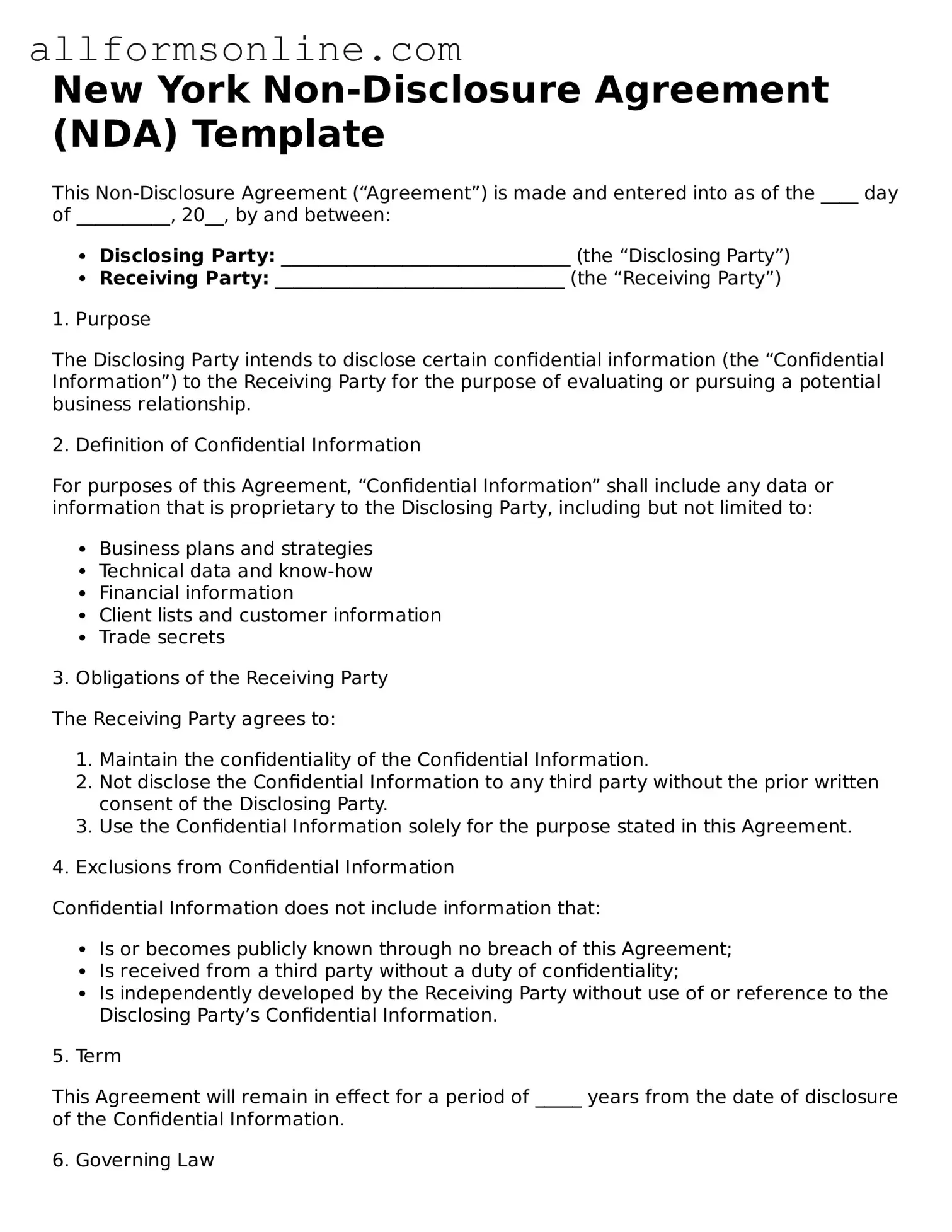What is a Non-disclosure Agreement (NDA) in New York?
A Non-disclosure Agreement (NDA) is a legal contract that protects confidential information shared between parties. In New York, this agreement ensures that sensitive information, such as business plans, trade secrets, or proprietary data, remains confidential. By signing an NDA, the parties agree not to disclose this information to others without permission.
When should I use a Non-disclosure Agreement?
An NDA is useful in various situations, such as when discussing business partnerships, sharing sensitive information with employees, or during negotiations with potential investors. If you plan to share information that you want to keep private, having an NDA in place can help safeguard your interests.
What are the key components of a New York NDA?
Typically, a New York NDA includes several important elements. It outlines the definition of confidential information, the obligations of the parties regarding that information, the duration of confidentiality, and any exceptions to the agreement. Additionally, it may specify the consequences of breaching the NDA, which can include legal action or monetary damages.
How long does the confidentiality obligation last?
The duration of confidentiality obligations can vary based on the agreement. In New York, it is common for NDAs to last anywhere from one to five years after the information is disclosed. However, some information, especially trade secrets, may require indefinite protection. It is essential to specify the duration in the NDA to avoid misunderstandings.
Can I modify a Non-disclosure Agreement?
Yes, NDAs can be modified to suit the needs of the parties involved. If both parties agree to changes, they can amend the original agreement. It is advisable to document any modifications in writing to ensure clarity and avoid potential disputes in the future.
What happens if someone breaches the NDA?
If a party breaches the NDA, the affected party may take legal action. This could involve seeking damages for any losses incurred due to the breach. The NDA may also specify remedies, such as injunctive relief, which can prevent further disclosure of the confidential information. It is crucial to understand the terms of the NDA to know your rights and options in case of a breach.
